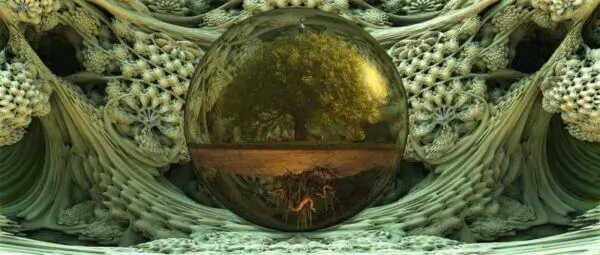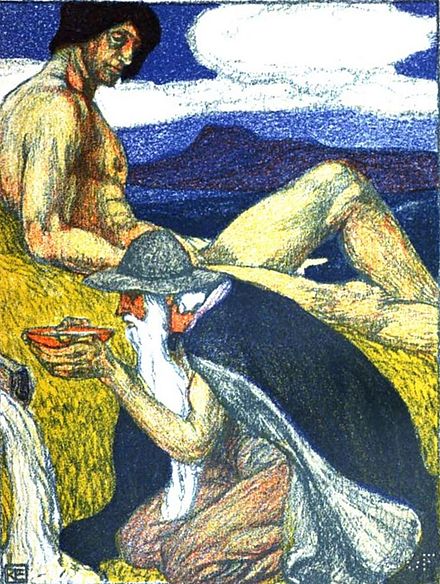Yggdrasil, Tree of Life in Norse mythology, is an appealing topic. Several years ago, I was part of a panel discussing this tree of life.
During this panel, any people had emotional stories to tell. Stories about how they have beautiful, inspiring dreams about trees, that connect them with nature. Stories about how mad they are that we screw up nature like we do.
Today I will share a book review about Yggdrasil, based on an analysis made by Maria Kvilhaug. Maria has a master degree in Old Norse mythology and initiation rituals.
The Seed of Yggdrasil. Deciphering the hidden messages in Old Norse Myths. (Click to buy the book and support Mindfunda).
by Maria Kvilhaug
Whyte Tracks 2013
ISBN 13: 978-8792632289
ISBN 10: 8792632289
Reviewed by Susanne van Doorn, Msc.
Yggdrasil and Comparative Mythology
It is so natural for me to compare mythologies worldwide. People have the same challenges everywhere. The same problems to solve. So one naturally assumes people have myths about similar problems.
But since the star from Joseph Campbell has faded, so has the trust in comparative mythology. You know that I am a big fan of Campbell, but I agree that not every story is a hero story.
Campbell was known to have “cherry picked” myths, so he could build the mono myth theory.
Maria Kvilhaug uses the same comparative mythology in her book. And I must say, just like Campbell’s books are nice to read, so is hers.
She is a “Pantheist”: “there is an ultimate unity behind the many gods, and that they are united in a single source” (page 635).
Yggdrasil and Edda
In 1643, the Edda, composed of several stories, was given to Bishop Svensson. He immediately recognised the value of those papers. Verses written by Snorri Sturluson in 1243.
At this time, Snorri was afraid that the young people would forget their rituals.

“Snorri had a clear and outspoken agenda with his work. He realised people were beginning to forget the myths of their ancestors” (page 21).
But the pagan gods, initiations and rituals are being described as devilish, satanic. Maria explains how the verses are written with respect (or fear?) for the church.
Yggdrasil as parable
A parable is a usually short fictitious story that illustrates a moral attitude or a religious principle.
Maria invites us to interpret the Edda as if it is an illustration of possible behaviours within the world.

In this way, Yggdrasil becomes a symbol of the human body. A representation of the tree-shaped nervous system, or the vascular system in our body.
Yggdrasil and The Eagle
At the top of the Yggdrasil, there is an eagle “and he knows much” (p 163). At the bottom of the Yggdrasil, there is a serpent coiled by the roots, eating them away.

Maria suggests that the eagle is a symbol for the all-knowing observer. Being a spiritual atheist, I am not so inclined towards a god/goddess who observes all.
But being a diabetic, I know from periods were I have suffered a low blood sugar level, that there is something in me that tells me that there is something wrong. My inner eagle. It tells me to go look for food/sugar when I notice that I start to see things unclear.
YGGDRASIL AND the snake
My old friend snake (read more about it in Amazing Animal) is a symbol of our connection to the earth. Remember how in Genesis Eve is being tempted by a snake?

If our human psyche is wired to seek its own way, not ruled by laws and prescriptions from God(s), there might be a psychic need to embrace the snake as part of our personality.
Remember how in the Matrix (Click to read more) agent Smith compares humans to a virus?
“You move to an area and you multiply and multiply until every natural resource is consumed and the only way you can survive is to spread to another area. There is another organism on this planet that follows the same pattern. Do you know what it is? A virus. Human beings are a disease, a cancer of this planet. You’re a plague and we are the cure” (The Matrix 1999).
Maybe that is the snake eating at the roots of our Yggdrasil. I always thought it was an excellent summary of the Catholic concept of the original sin. We humans are bad. It eats us. We try to cure it but destruction of the world seems unstoppable.
Yggdrasil and Odin
Norse god Odin (Click to read more) is important to me. I met an Odin-like one-eyed wander in a dream once. I bought him some good food, because I assumed he was alcoholic. When I got outside I looked under his big hat and became scared to death. He only had one eye! His missing eye was uncovered…
Maria interprets Odin as “The Universal Spirit”. A shared unconscious, like Jung‘s collective unconscious. It reminds me so much of the religious concept I embraced when I was a child. I used to think that god was the sum of all the good in all the people on the earth.

Odin, the Wanderer
Odin his name means Poetry, Spirit or Frenzy. “Obviously, we have all qualities within us. The Spirit is that what gives us breath and inspiration, which is exactly what Odin is said to have given to men and women alike. The Poetry is equivalent of the mind, that within us which creates the stories that are our lives, and the Frenzy is our passion, our desire, that with drives us forward and makes us seek, rebelling against everything that limits the fullness of being” (page 643).
Yggdrasil and the Goddess
In the seventies there was a rumour that we once had lived in a matriarchal society. A society ruled by women. This was never the case. But femininity, and the importance of females for the survival of any community is clearly embraced in this book.
“To the initiate of the Mysteries of Isis, the myth is a parable of the quest for salvation” (page 39).

Did you know there is a maiden that sleeps at the roots under Yggdrasil? She dreams up the world. This made me think about Anne Baring her assumption that the Cosmos itself is dreaming.
Conclusion
PRO
- So much information about Norse Mythology. Information about Odin and his origin, about the number nine and the number three. Information about Freya, wife of Odin and all the other famous gods.
- So much information about history. Because mythologies of different countries are compared you get a view good history lessons too.
- The difficult poetry of Edda is made so much more understandable by Maria. Even if you do not agree with her interpretation, you are going to learn so much about mythology and its place in the current world.
- If you like witches this book will have some intriguing chapters about “The Witch Before Time” and “The Way of the Wand Witch”. Women were important in the Viking age, even though they were not supposed to be warriors.
- The female/Goddess is honoured in this book. You will find out much about
CON
- The contents page is not right, at least not in my print of 2013. From paragraph 2.2 pages have started to shift. This means that paragraphs or chapters you are looking for are one or even two pages further in the book. This is a sloppy mistake which is uncalled for in such a marvellous book.
- The font used is extremely small, which makes it less attractive to read.
- It is a huge book that contains 677 pages. You will have to take your time to read it.
- The price is for some people a bit high: $77.99. But if you are infatuated with Norse Mythology it is definitely worth your while.
- There is a biography but not a subject index at the end of the book. Being a book-addict I know which book contains what information but I refuse to bother my brain with the memory of page numbers. So I am a big fan of subject indexes to easily look up things in the multitude of books that have gathered in my house.
Mindfunda verdict:
8/10
Here is an link to buy on Amazon if you enjoyed this review, and like to support our work. We appreciate your help!
Our Current Courses (Click to find out More)
Sign up for our free e-book: 10 easy ways to instantly improve your dream memory


